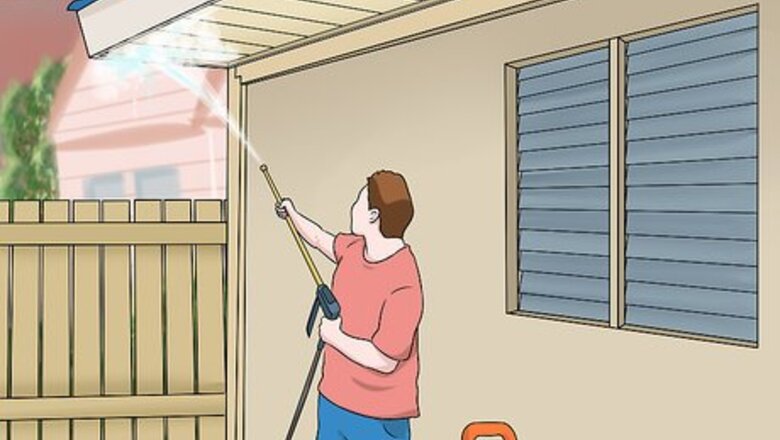
views
Cleaning the House

Clean the eaves with a power washer. Any surface you plan on painting will need to be cleaned, scraped, and sanded. Position your power washer under the eaves, start it, and then spray the eaves from the ground with a steady stream of water until the surface is free of dirt and debris. Wear safety goggles when spraying to protect your eyes. Avoid positioning the nozzle of your power washer close to the structure of your house. High-pressure attachments at close distance can damage wood. You can similarly clean eaves without a power washer using a ladder, a bucket of water, a stiff-bristle brush, and some elbow grease. If you don't own a power washer, renting one from a hardware store or home center may be your most affordable option.
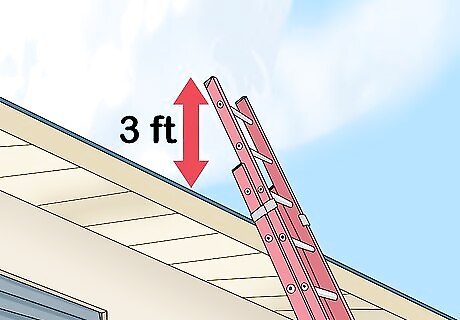
Position your ladder. Your ladder should extend 3 ft (0.91 m) beyond the top of the house/eaves. Do not lean your ladder against unstable fixtures, like downspouts. If you need to lean your ladder against the gutter, lean it against a fastener, since that's the most stable part of the gutter. You'll probably need to use anywhere between a 16-24 foot ladder. If your ladder isn’t level, insert small pieces of scrap wood under the lower foot to raise its height until level. Always check the stability of the ladder after leveling. As you finish scraping and painting portions of your home, you’ll have to move the ladder to new sections. Never overextend your reach when on a ladder. Bend a wire clothes hanger into a hook and use it to hang a bucket for holding tools, supplies, and garbage.
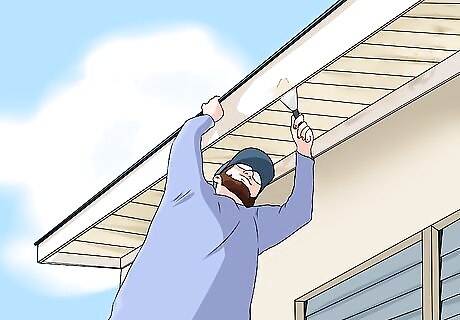
Scrape old paint from the house with a putty knife. Wide putty knives work best for the main parts of eaves, but smaller knives are handy for corners and edges. Scrape as much paint as you can from the structure with your knives. Paint that is visibly loose but stubborn may come off most easily with a wire-bristle brush. When scraping, you’ll want to remove all old paint that isn’t still bonded to the wood. Don’t waste time trying to scrape away all the paint; remove loose paint and move on. Paint chips and flakes may be harmful to pets and small children. Use a drop cloth below your work area to catch paint that is scraped free.
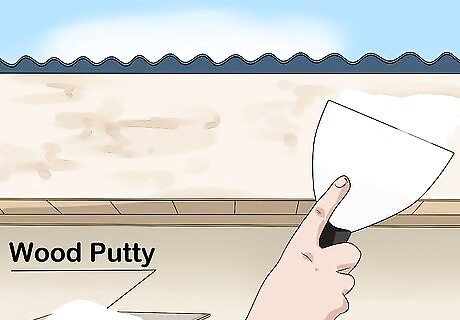
Repair pitting and craters with siding spackle. As you scraped, it’s likely that some wood flaked or splintered free. This can create pitting or craters in the surface of your house. Use a siding spackle and a clean putty knife to evenly fill pitting or craters. Different spackles may require special processes for application. Always follow the usage directions on your spackle for best results. Sand dried spackle smooth with an orbital sander equipped with 60- or 80-grit sandpaper. Wear a dust mask and safety goggles while sanding. Spackling and sanding is quite tedious. Focus on high-traffic or high-visibility areas. Out of sight pitting can be ignored.
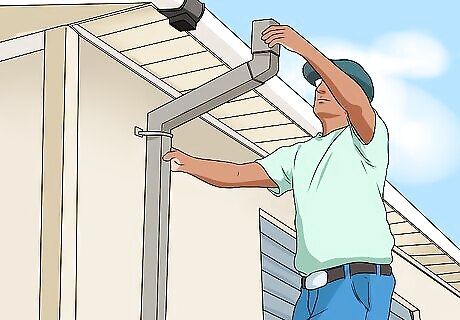
Remove downspouts and other fixtures. You might not want to paint some of these, but the ones you do will be much easier to paint when removed from your home. Usually, removal only requires a drill and some screwdriver bits. Unscrew the attached fixtures, like downspouts, outdoor lights, windchimes, and so on, and set them off to the side. If you plan on painting downspouts and fixtures, make sure you select a paint formulated for the material they are made from, like aluminum. Because downspouts can be long and cumbersome, these can be difficult to remove by yourself. Have a friend or family member give you a hand so they don’t get damaged. So you don’t lose any hardware, put the fasteners into a plastic bag, seal the bag, then tape it to its fixture.
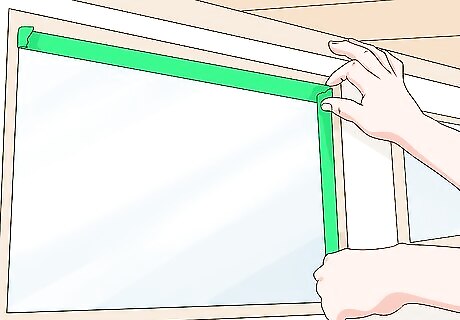
Tape off windows and other features you won’t be painting. Break out your painter’s tape (or masking tape) and tape off features you want to keep free of primer and paint, like windows and doors. Be precise while doing this; the tape shouldn’t overlap the area you’ll be painting. You don’t need to tape the whole window or door. A thin layer of tape around the perimeter should be sufficient. If you’re really concerned about paint getting on windows or doors, cover the area with newspaper or cardboard and fasten these covers into place with tape. If you plan on only painting the eaves, you’ll also want to tape off the fascia board where the eaves meet the walls of your house.
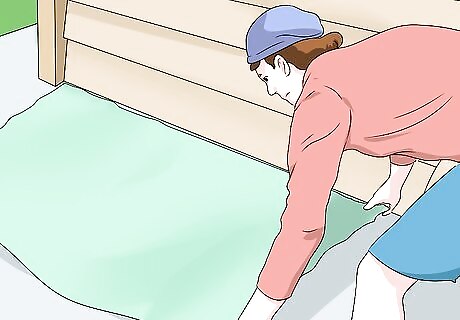
Arrange drop cloths, if desired. Paint dripped on the ground won’t likely cause much of a mess, but it can be a hazard for pets and young children. Spread drop cloths under the sections you are painting and priming to catch paint droplets.
Priming
Plan to prime and paint in the shade whenever possible. Painting in the sun will cause the paint to dry quickly. This will make it more difficult to touch up runs, drips, and puddling. Paint in the natural shade created by the structure of your home for longer drying times and easier touch ups.[Image:Paint Eaves Step 8.jpg|center]] Whenever you're doing exterior painting, be careful to be conscientious of the areas underneath you so you don't step all over your plants and damage your bushes. The heat of the day can also cause paint to dry excessively fast. If you’re painting in midsummer, avoid painting during the hottest parts of the day.
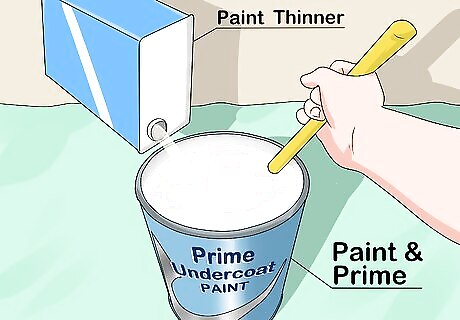
Prepare your primer, if necessary. Each primer will be different, so you should follow the directions for best results. Some primers may recommend thinning. This can be done but adding a small amount of paint thinner to the primer and then stirring it with a clean paint stirrer. Only add paint thinner to your primer in small increments. Adding too much may thin the primer too much, which could result in you needing to apply extra coats. Oil-based exterior primers generally work best for bare wood. Many primers can be applied directly to the cleaned and scraped surface of your eaves. When your primer is ready, use a bucket hook to suspend the can from its handle from an upper rung of the ladder.
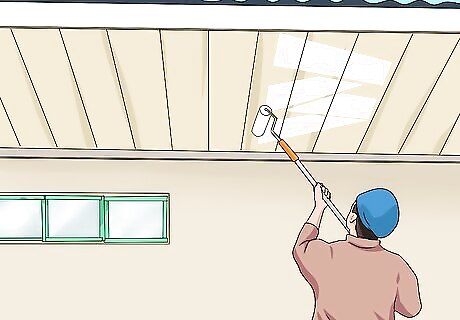
Prime the eaves with a narrow roller. Use a W pattern to prevent missed spots, and work from top to bottom to prevent drips and runs. If drips or runs occur, wipe them away immediately with your hands or a clean rag. To remove particularly stubborn drips or runs, wipe the area with a rag dampened with paint thinner. Don’t worry if the wood grain or old paint is visible through the primer, as this is fairly common. Three coats of primer are usually recommended for the best finish in your paint job. Read the label directions of your primer to determine when to add additional coats. Some quick-drying primers may be ready for the next coat in an hour, though others may take longer.
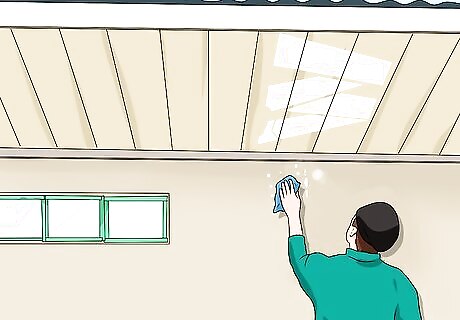
Wipe away droplets and runs as they occur. Stay alert as you prime the eaves. Any droplets or paint spatters on surfaces you don’t want to paint should be wiped away immediately with your hands or a clean rag. The sooner you wipe away droplets and runs, the easier they wipe away. If the paint smears or doesn’t come off easily, use a clean rag that has been lightly dampened with paint thinner.
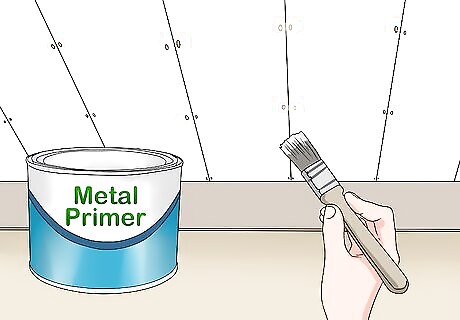
Apply metal primer to rusty nails. The rust from nails can bleed through coats of paint and cause discoloration. Find all rusty nails and use a thin layer of metal primer to ensure this doesn’t happen to you. A single, even coat should be sufficient.
Caulking Cracks
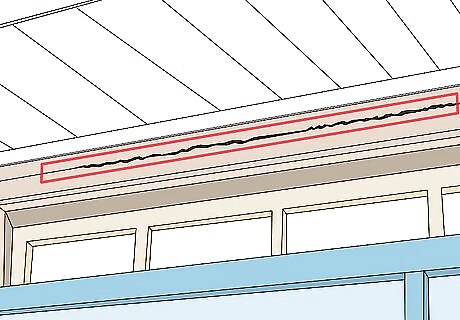
Inspect the house for loose caulking and cracks. Over time, the caulking of your house may loosen or disintegrate. Other spots of your home may simply have cracked from age. These gaps will cause drafts, heating and cooling loss, and a route for bugs and animals to enter. Sunward and windward facing parts of your home will likely be the most weathered. Inspect these areas especially carefully. The corners and edges of eaves are common areas where caulking often comes loose or cracks tend to appear.
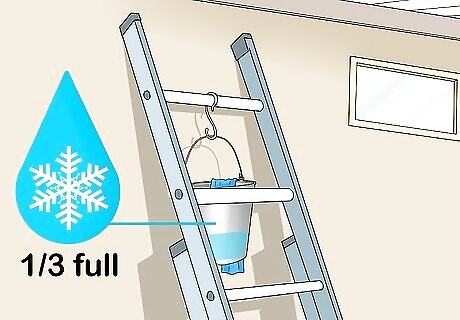
Fill a bucket with cold water and hang it from the upper rungs. Fill the clean bucket one-third full of cold water. Put a clean rag into the water for later, and use a hanger to hang the bucket from the upper rungs of the ladder. You’ll be using this water to clean off excess caulk that gets on the painted portion of your home or your hands.
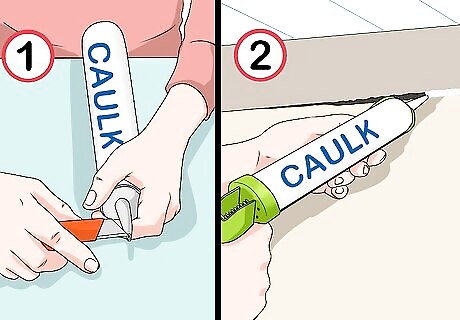
Fill missing caulking and cracks with caulk. Use a utility knife, scissors, or shears to cut off the tip of the caulking tube and put it in the calk gun. Press the trigger until a little caulk emerges from the tip. Now you’re ready to climb your ladder and fill in empty holes. Use a liberal amount of caulk to fill the entirety of the crack. When caulk begins to overflow the hole, it should be filled. Avoid caulking the underside of clapboard (sometimes called lapboard). This could cause damage to the wood.

Smooth the caulk with your fingers and move on to the next crack. When the caulk begins to overflow the hole, stop caulking. Smooth the caulk in the crack so there are no gaps and it curves inwards slightly. As you wipe away caulk, it’ll build up on your hands. Rinse your hands in your cold water bucket and use the rag to remove caulk from the structure or your hands as necessary.
Painting

Mix the paint and hang it from your ladder. Open the paint and mix it well with a clean paint stirrer. Attach one end of your bucket hook to the handle of the paint can and hang the can from the upper rungs of the ladder. For most homes, you’ll want a quality exterior latex paint. If you have any doubts about which paint you should use, ask an expert at your local paint store, hardware store, or home center.
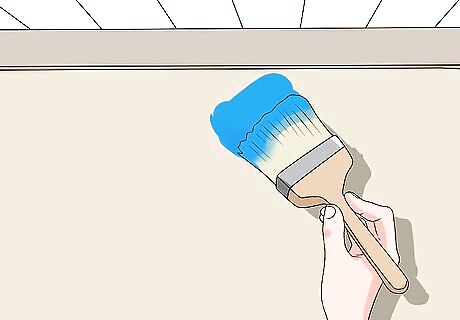
Paint a small section to test for peeling. Paint a small portion of the primed area and wait for it to dry fully. Dry times will be listed on the paint label. When dry, scratch the paint with your fingernail. If it peels off, it’s likely there’s still residue on the surface causing peeling. Peeling paint can often be remedied with another coat or two of primer. If, after this, you still suffer peeling, consult a paint expert at a hardware store, home center, or paint store.
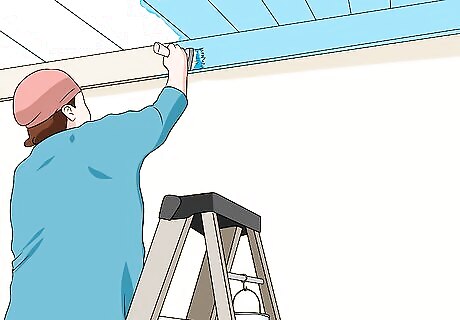
Paint the eaves. Ascend the ladder and paint all surfaces of the eaves that are within reach. When you get to the point that you have to reach to paint new areas, remove the paint can and shift the ladder over to the new location. Ascend the ladder again and continue painting in this fashion until your eaves are fully coated. Apply paint in a similar fashion as you did the primer: use overlapping strokes in a W pattern to apply a thin, even coat. Use your paintbrush to smooth out drips, puddling, and runs as soon as you see them.
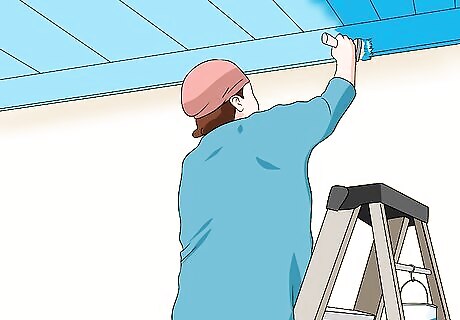
Paint additional coats as necessary. If the first coat of paint looks thin or if its color isn’t quite as rich as you expected, you likely need another coat of paint. Consult the label directions of your paint to find how long you need to wait until you can add the next coat. Apply another coat or two as needed. When the final coats dry, your eaves are finished. Painting more than three coats or using coats that are thick can have a negative impact on the finished paint job. Follow the label directions when applying additional coats for the best finish.
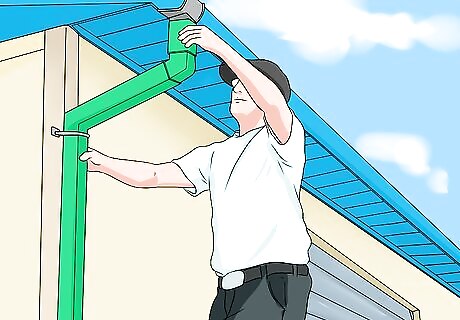
Reattach hardware as necessary and enjoy your painted eaves. Once the paint is dry, you’ll be able to replace downspouts, windchimes, and other hardware you removed for painting. When everything’s back in place, you’re finished. If you want your hardware to match the paint job of your eaves, it’ll be easiest to paint these while still unattached.



















Comments
0 comment